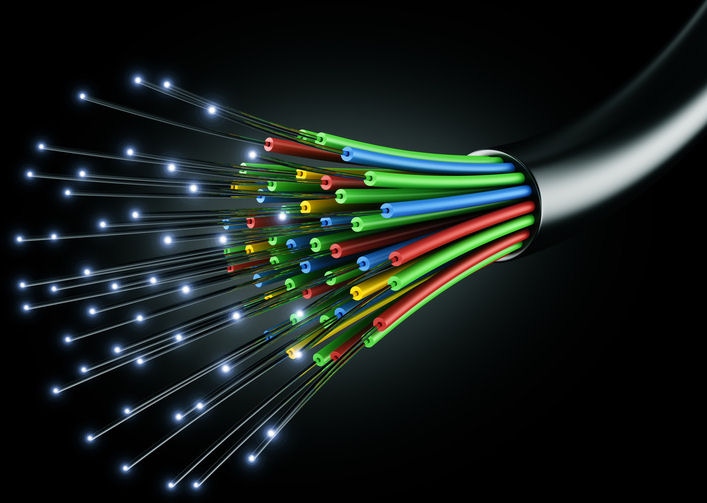ICPs, telcos, and enterprises are all building data centres as well as seeking extra capacity through third parties as they extend and expand their scale and service offerings.
March 13, 2020

Telecoms.com periodically invites expert third parties to share their views on the industry’s most pressing issues. In this piece, Adam Roberts, Digital Content Marketer for NGON & DCI World 2020, discusses the Internet Content Providers (ICPs) demanding dark fibre from Communication Service Providers (CSPs) and the ripple effect being felt across the data centre interconnect market.
ICPs, telcos, and enterprises are all building data centres as well as seeking extra capacity through third parties as they extend and expand their scale and service offerings. Partnerships with the CSPs are integral to connecting these ever-growing networks of data centres. ICP connectivity networks largely consist of lit services provided by the CSP, existing dark-fibre networks, and commissioned networks both wholly owned and within partnerships.
According to a recent Omdia analysis, in the very-high bandwidth data centre interconnect portion of the market, ICPs are wanting more access to dark fibre where dark fibre is available. And where there isn’t dark fibre, ICPs want the telcos to build it for them. This is to handle the increased traffic where these heavy-duty bandwidths are vital. But what is driving this traffic?
Video streaming, cloud gaming and quality of experience driving increasing network demand
On the consumer side, many of these drivers are clearly apparent. Video streaming demand (a market set to be worth $184.3 billion by 2027) has ramped up with premium media service providers, such as Netflix, Amazon Prime and Disney+ (releasing March 24th in the UK), all battling for dominance.
This huge increase in end-user traffic requires infrastructure to be bolstered to deliver competitive customer experiences and support any additional value-add services, such as ultra-high definition streaming. And there are no signs of this type of traffic slowing down either, with video set to account for 82% of all IP traffic by 2022, according to a recent report from Cisco.
Similarly, cloud gaming is another innovation seen in recent years that is driving up high bandwidth demands. Google Stadia has given us tantalizing glimpses of the future of video gaming and its utter reliance on a stable, quality internet connection.
Offering an overall low-latent, high-speed, quality internet connection is potentially going to be the driving force behind new service approaches, both on the consumer and enterprise side. Quality of experience and quality of services is what will make the key differential points between service providers going forward.
The next move for ICPs
ICPs want dark fibre as a key part of their roadmap to meet these demands, as well as respond to other underlying business and technology forces, like enterprise transformation moving towards the cloud.
Apart from a select few wholesale oriented CSPs, not many can offer dark fibre at the required scale. In many international markets, a wholesale dark fibre market does not exist as incumbent CSPs have fibre but might not be structured to support dark fibre implementation. As a result, ICPs are putting pressure on CSPs outside of their lead markets of North America and Europe in search of other markets to play ball.
CSPs will need to stay vigilant and consider how this could negatively impact the content relationships they are already trying to leverage with ICPs to extend their own service offerings.
This opinion feature is based on a recent report published by Omdia, titled ‘The ICPs: Bullying the CSPs for dark fibre’. In a copy of their analysis – available to download here – Omdia delve into each of these ICP pressures in further detail and provide analysis on the new strategic position CSPs should take to address these challenges. Omdia combines Informa Tech’s market leading analyst houses: Ovum, Heavy Reading, Tractica and IHS Markit’s TMT research to connect the dots across the entire tech ecosystem to provide the latest optical transport network and data centre interconnect analysis.
To discover the latest trends for next-generation optical networking, claim your ticket to NGON & DCI World 2020 (2-4 June, Hyatt Regency Barcelona Tower, Barcelona, Spain). Book your pass now with a 20% discount using the code ‘TELECOMS20’. Gain insights from senior representatives from Huawei, ZTE, Ciena, Nokia and more as they discuss the impact of new technology and innovation on OTN performance.
Read more about:
DiscussionAbout the Author(s)
You May Also Like








.png?width=300&auto=webp&quality=80&disable=upscale)


_1.jpg?width=300&auto=webp&quality=80&disable=upscale)


.png?width=800&auto=webp&quality=80&disable=upscale)